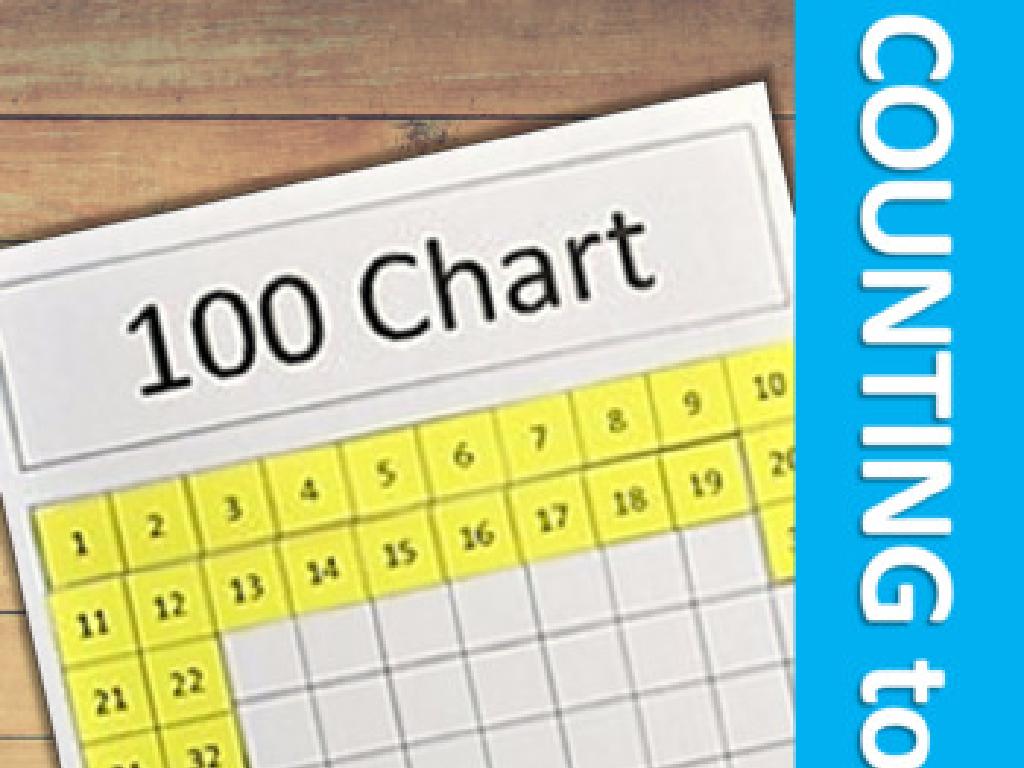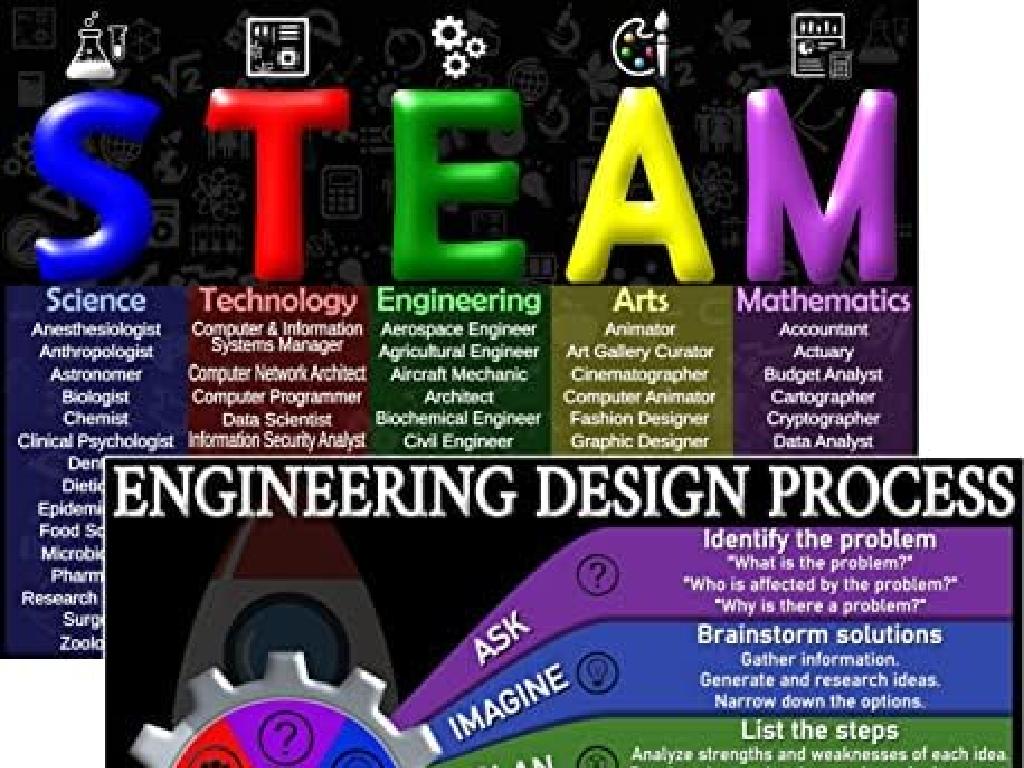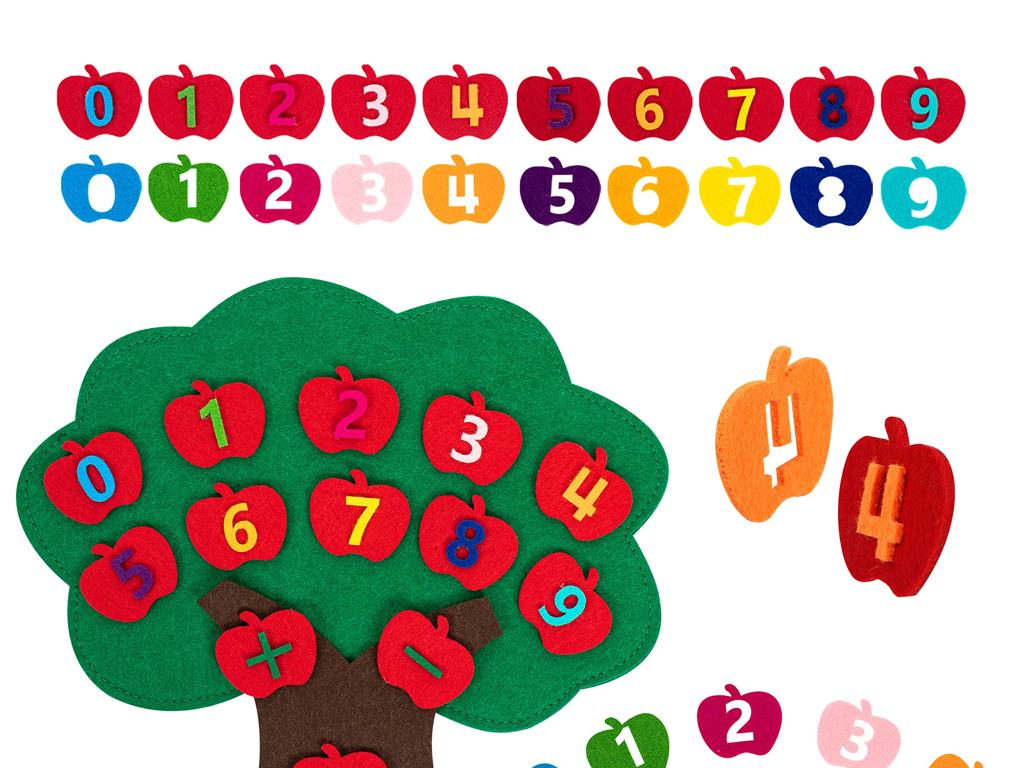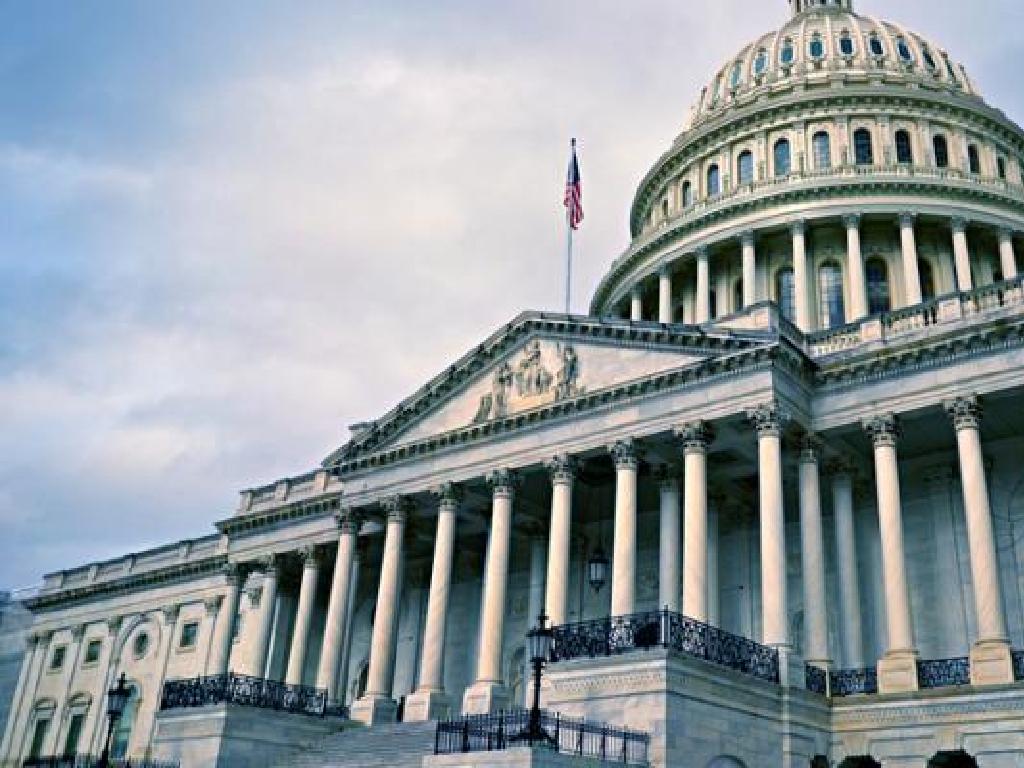State Government
Subject: Social studies
Grade: Fourth grade
Topic: Government
Please LOG IN to download the presentation. Access is available to registered users only.
View More Content
Welcome to State Government!
– What is State Government?
– It’s like a smaller version of our country’s government, but for our state.
– State Govt.’s role in daily life
– They make laws about schools, roads, and safety.
– Compare State & Federal Govt.
– State Govt. takes care of our state’s needs, while Federal Govt. handles national issues.
– Activities: Understanding Govt.
|
This slide introduces students to the concept of state government and its significance in their everyday lives. Begin by explaining that the state government is responsible for managing the state’s affairs, similar to how the federal government manages the nation but on a smaller scale. Highlight how state government affects various aspects of daily life, such as education, transportation, and public safety. Draw comparisons between the state and federal governments to help students understand the different responsibilities and levels of governance. Incorporate interactive activities to engage the students, such as discussing what they know about their state government or drawing a diagram to visualize the differences between state and federal government.
Branches of State Government
– The Legislative Branch role
– They create and vote on new state laws.
– The Executive Branch role
– The governor leads this branch, carrying out laws.
– The Judicial Branch role
– Courts decide on law meanings and settle disputes.
– Balance of power
|
This slide introduces the three branches of state government and their primary functions. The Legislative Branch, consisting of the state senate and house (or assembly), is responsible for making and passing state laws. The Executive Branch, headed by the governor, implements and enforces these laws. The Judicial Branch, made up of the state’s court system, interprets laws and ensures justice is served. Emphasize the importance of the separation of powers, which ensures a balance and prevents any one branch from becoming too powerful. Encourage students to think of questions or examples of how these branches might work together to govern their state.
The Legislative Branch of State Government
– State Senate and House
– The State Senate and House make state laws.
– Journey of a state bill
– A bill must pass both houses and be signed by the governor.
– Know your local representatives
– Who represents our area in the state government?
– Their roles in government
– They propose bills, vote on laws, and represent us.
|
This slide introduces students to the legislative branch of our state government, which includes the State Senate and House of Representatives. Explain that these two bodies work together to create state laws. Walk through the process of how a bill becomes a law, emphasizing the importance of each step and the role of the governor. Help students identify their local representatives and understand the significance of their roles, such as proposing legislation, voting on laws, and representing the interests of their constituents. Use examples relevant to students’ lives to illustrate these concepts, and encourage them to think about how laws in their state are made and who helps to make them.
The Executive Branch of State Government
– The Governor: Our State Leader
– The governor is like the president but for our state, making important decisions.
– Key Officials in the Executive Branch
– Includes officials like the Lieutenant Governor, Attorney General, and Secretary of State.
– Executive Branch Functions
– They enforce state laws, manage resources, and execute government programs.
– How the Branch Impacts Us
– They make decisions that affect our schools, safety, and local environment.
|
This slide introduces students to the executive branch of the state government, highlighting the role of the governor as the state leader and the functions of other key officials. It’s crucial to explain how the executive branch operates and its impact on the students’ daily lives. Discuss the governor’s responsibilities, such as signing bills into law and managing the state budget. Introduce other officials who support the governor and their roles. Explain how the executive branch enforces laws and manages resources, providing services like education and public safety. Encourage students to think of questions or examples of how state government decisions have influenced their community or environment.
The Judicial Branch of Our State
– Role of State Courts
– State courts resolve disputes, interpret laws, and uphold justice.
– Our State’s Court System
– Learn the different levels, like Supreme and local courts.
– Selection of Judges
– Judges can be elected or appointed, depending on our state.
– Judges’ Impact on Society
|
This slide introduces students to the judicial branch of our state government, focusing on the role and importance of state courts. It’s essential to explain that state courts handle local disputes and interpret state laws, ensuring justice is served. Discuss the hierarchy within the court system, including any supreme, appellate, and local courts specific to our state. Clarify how judges come to hold their positions, whether through elections or appointments, and the significance of their role in shaping the law and society. Encourage students to think about how fair and impartial courts contribute to a just community.
State vs. Federal Government
– Similarities in structure
– Both have three branches: Executive, Legislative, Judicial
– Differences in powers
– Federal: national defense, currency. State: education, local laws
– State government’s proximity
– State government deals with issues closer to our communities
– Impact on daily life
– Decisions by state affect schools, parks, and local roads
|
This slide aims to help students understand the relationship and distinctions between state and federal governments. Highlight the similarities in structure, such as the division into three branches, to provide a familiar framework. Discuss the different responsibilities, like how the federal government handles national defense and currency, while state governments manage education and local laws. Emphasize that state government is often more relatable to students because it deals with aspects of their daily lives, such as schools and community resources. Encourage students to think of examples of how state government decisions have impacted their lives, such as changes in their school or local parks.
Your Role in the State Government
– Ways to get involved locally
– Join local groups, attend meetings
– Voting in state elections
– Voting helps choose state leaders
– Community projects impact
– Projects that improve our neighborhoods
– Your voice matters
|
This slide aims to empower students by showing them how they can actively participate in their state government. Discuss the various ways they can get involved, such as joining youth groups or attending city council meetings. Emphasize the importance of voting, even though they are not old enough to vote yet, by explaining how it shapes the leadership and policies of the state. Highlight examples of community projects like park clean-ups or local fundraisers that have a direct impact on their surroundings. Encourage students to think about ways they can make their voices heard and contribute to the community, fostering a sense of civic responsibility and engagement.
Class Activity: Create Your State!
– Divide into groups, assign roles
– Draft a law for your state
– Think about what law would benefit your community
– Present your law to the class
– Explain your law’s importance
– Why is this law good for the people in your state?
|
This activity is designed to engage students with the concept of state government by allowing them to simulate the legislative process. Divide the class into small groups and assign each group different government roles such as governor, senators, or representatives. Each group will think of a law they believe would improve their state and write a draft. Encourage creativity and guide them to consider the needs of their community. After drafting, each group will present their law to the class, explaining the purpose of the law and why it is important. This will help students understand the legislative process and the considerations involved in creating laws. Possible roles include governor, senator, representative, and lobbyist. Each group can choose a different focus for their law, such as education, environment, or public safety.






